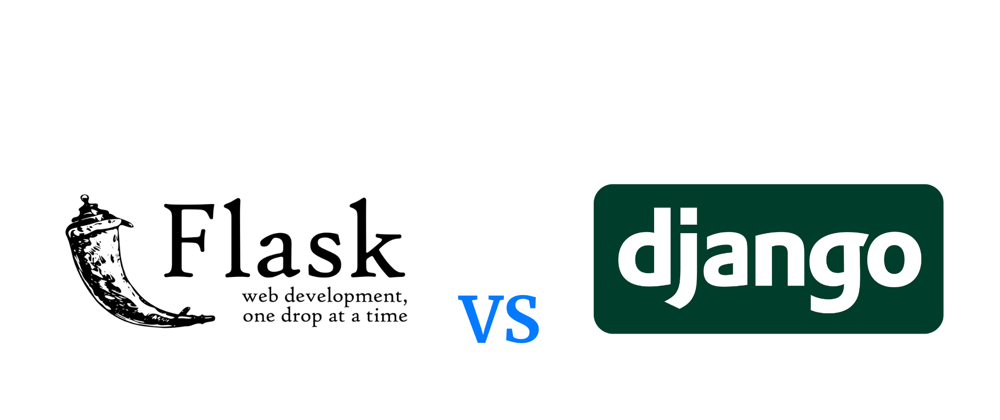Python, renowned for its simplicity and readability, has become a staple in web development. Among its many strengths are Django and Flask, two popular web frameworks that streamline the development process. While both are designed to make web development easier and more efficient, they have distinct differences that cater to different needs and preferences.
Django:
Django, often referred to as the "web framework for perfectionists with deadlines," is a high-level Python framework that encourages rapid development and clean, pragmatic design. It follows the "batteries-included" philosophy, providing developers with a plethora of built-in features and libraries, such as authentication, URL routing, templating, and database management through its ORM (Object-Relational Mapping) system. Django emphasizes convention over configuration, which means developers can quickly get started on projects without spending too much time on setup and configuration.
Flask:
On the other hand, Flask is a micro-framework that prioritizes simplicity and flexibility. Unlike Django, which comes with a predefined structure, Flask offers minimalistic components, allowing developers to choose and integrate only the functionalities they need. While Flask lacks some of the built-in features of Django, it compensates with its lightweight and modular architecture, making it ideal for smaller projects or applications that require a more customized approach. Flask provides the basic tools needed for web development, such as routing, templating, and HTTP request handling, but developers have the freedom to add extensions or third-party libraries as needed.
Apart from these 2 frameworks you can also look into Django vs Node.js comparison.
Similarities:
Despite their differences, Django and Flask share several similarities. Both frameworks are written in Python and adhere to the WSGI (Web Server Gateway Interface) standard, making them compatible with various web servers and deployment options. Additionally, they both prioritize simplicity, scalability, and maintainability, making them suitable for projects of all sizes.
Differences:
The primary differences between Django and Flask lie in their philosophy and approach to web development. Django follows a more opinionated and comprehensive approach, providing developers with a predefined structure and numerous built-in features. In contrast, Flask adopts a minimalist philosophy, offering developers greater flexibility and control over their projects. While Django is well-suited for large-scale applications with complex requirements, Flask excels in smaller projects where customization and simplicity are paramount.
Pros and Cons:
Django:
Pros:
Rapid development: Django's built-in features and conventions allow developers to quickly prototype and build web applications.
Scalability: Django's architecture is designed to handle large-scale applications with ease, making it suitable for projects of any size.
Community and ecosystem: Django boasts a vibrant community and extensive ecosystem of third-party packages and plugins, providing developers with additional tools and resources.
Cons:
Steeper learning curve: Due to its comprehensive nature and built-in features, Django has a steeper learning curve compared to Flask, especially for beginners.
Less flexibility: While Django offers a robust set of features out-of-the-box, developers may find it challenging to deviate from its predefined structure and conventions.
Flask:
Pros:
Flexibility: Flask's minimalist design allows developers to customize their projects according to their specific requirements, providing greater flexibility and control.
Lightweight: Flask has minimal dependencies and a small codebase, resulting in faster startup times and lower resource consumption.
Easy to learn: Flask's simplicity and straightforward design make it easy for beginners to grasp and start building web applications. Cons:
Lack of built-in features: Unlike Django, Flask lacks some of the built-in features commonly found in web frameworks, requiring developers to rely on third-party extensions or libraries.
Limited scalability: While Flask is suitable for small to medium-sized projects, it may face challenges when scaling to larger applications with complex requirements.
Pricing:
Both Django and Flask are open-source frameworks distributed under liberal licenses (Django uses BSD, Flask uses BSD or MIT), meaning they are free to use for commercial and non-commercial projects alike. There are no licensing fees or costs associated with using either framework, making them accessible to developers of all backgrounds and budgets.
Alternatives:
While Django and Flask are among the most popular Python web frameworks, there are several alternatives available, each with its own strengths and weaknesses. Some notable alternatives include:
Pyramid: A flexible and minimalistic framework that strikes a balance between Django's comprehensiveness and Flask's simplicity.
Tornado:An asynchronous web framework known for its high performance and scalability, making it ideal for real-time applications and websockets.
FastAPI:A modern web framework for building APIs with Python, known for its speed, simplicity, and automatic documentation generation.
Bottle: A lightweight and minimalist framework similar to Flask, designed for small-scale projects and microservices.
Ultimately, the choice between Django and Flask (or any other web framework) depends on the specific requirements, preferences, and constraints of the project at hand. While Django offers a comprehensive solution for large-scale applications, Flask provides greater flexibility and customization options for smaller projects or those with unique requirements. By understanding the similarities, differences, pros and cons, and alternatives of each framework, developers can make an informed decision that best suits their needs.







Top comments (0)